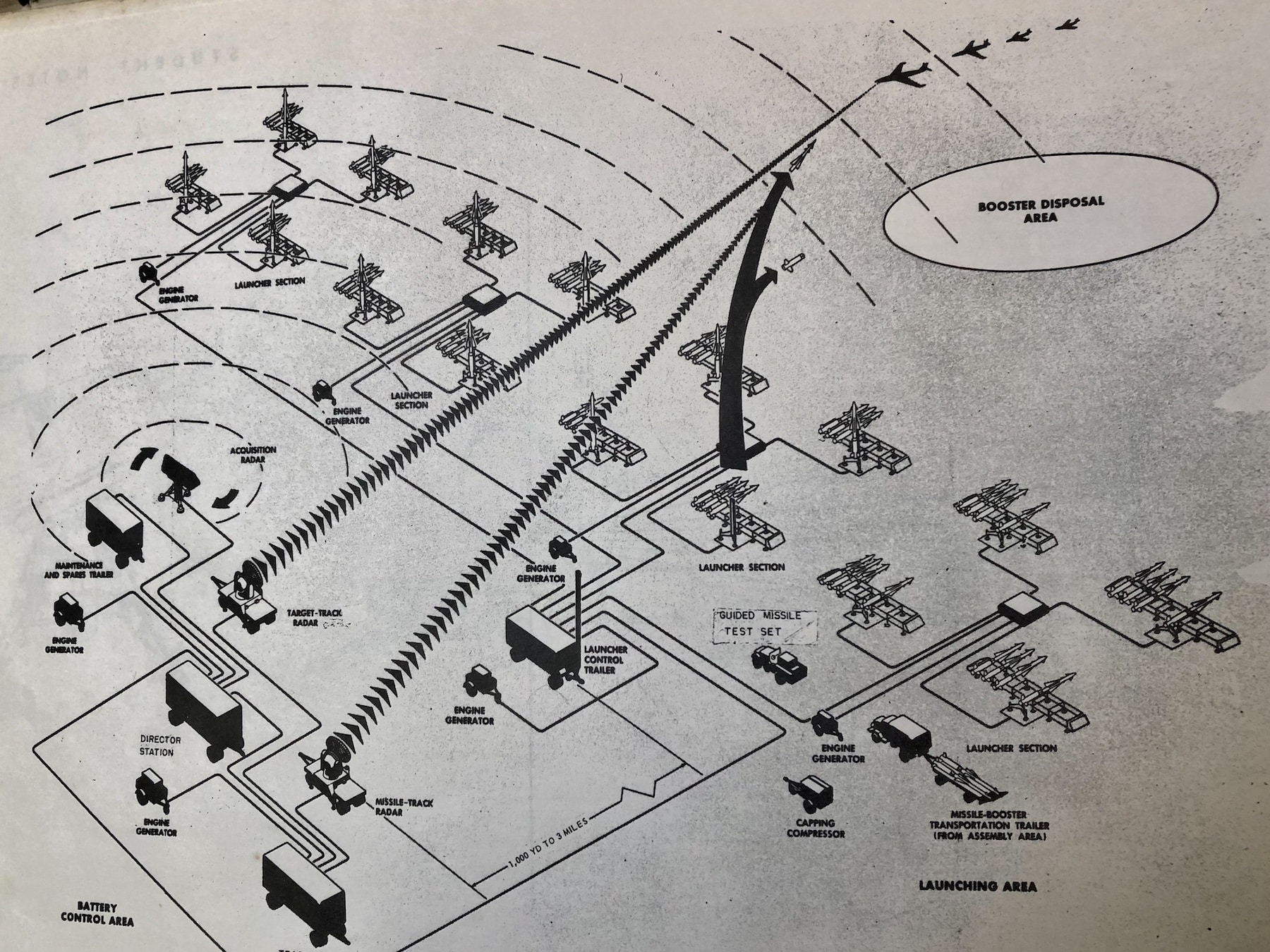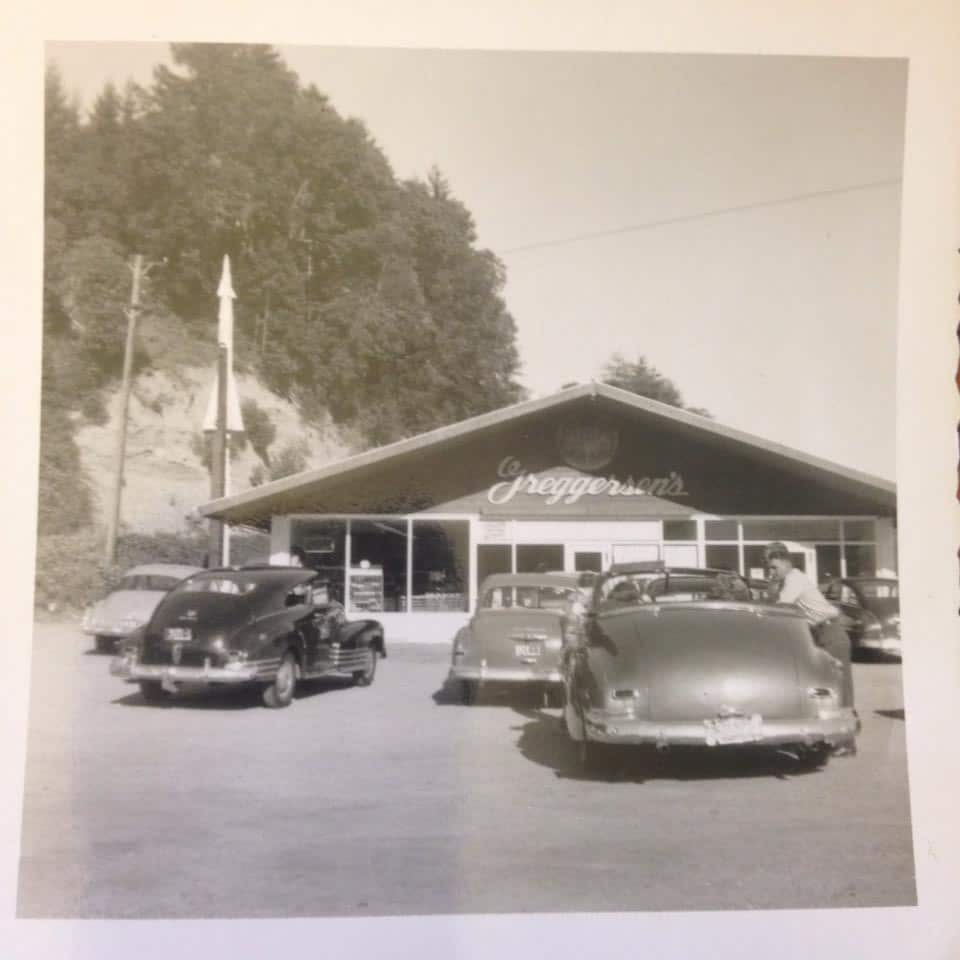Community Government
Old Olalla missile site now just a blip on community’s radar
Olalla once had missiles in its backyard.
Community Sponsor
Community stories are made possible in part by Peninsula Light Co, a proud sponsor of Gig Harbor Now.
Few remember. Most are too young. The base existed for just a handful of years. And it was hush hush.
S-62 was one of nearly 300 Nike Ajax bases built during the Cold War as a last line of defense to protect American cities, industrial centers and military targets from faster, higher-flying Soviet bombers. Eleven of the sites ringed Seattle. They were armed with the first anti-aircraft guided missiles in the world.
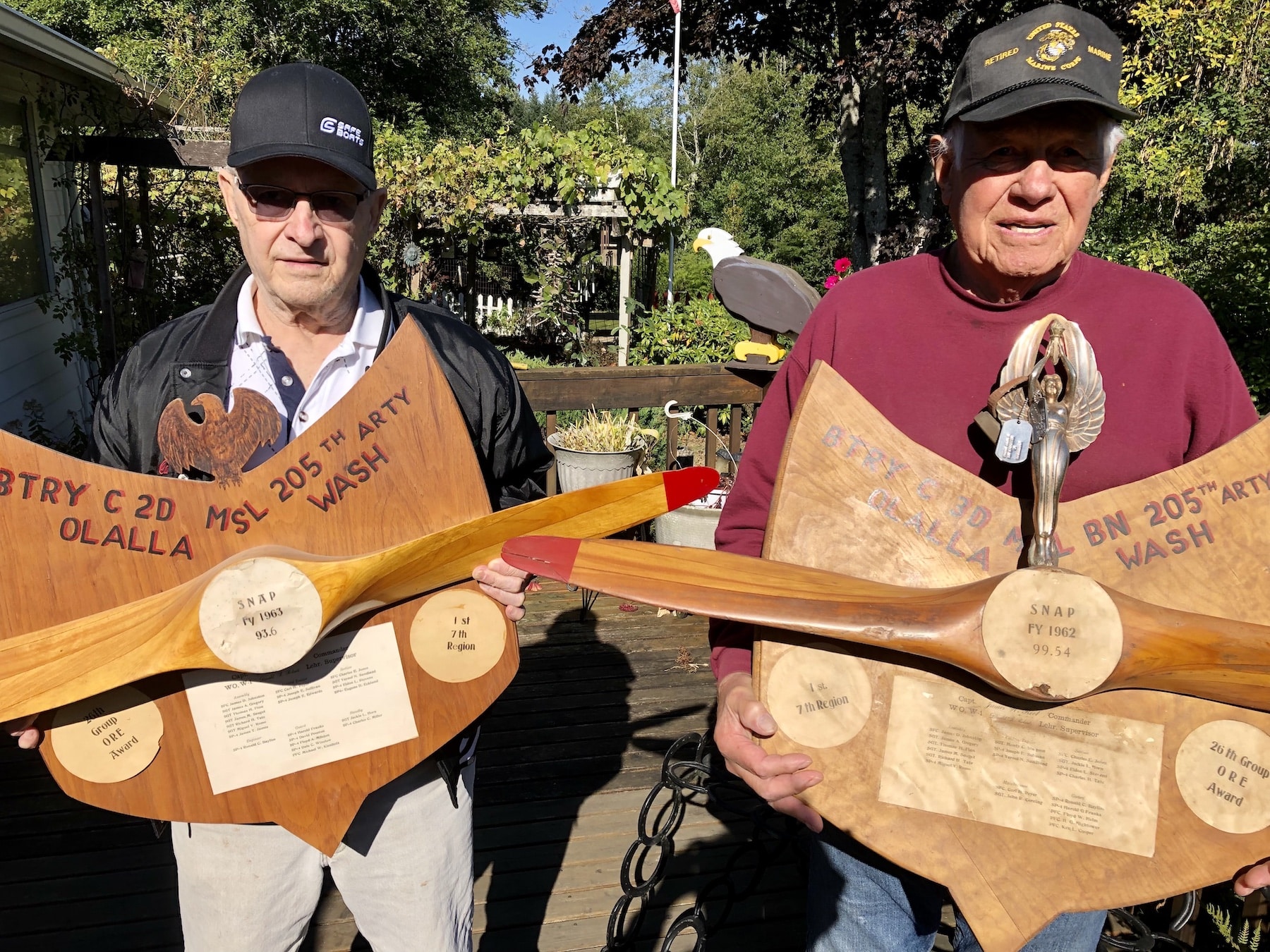
Carl Tinker, left, and Vince Romo hold trophies that the Olalla Nike team won at annual firing exercises in New Mexico. The propellers are from drones that the missiles blew up.
Though the shrouded Olalla Nike site has been lost in time, Vince Romo and Carl Tinker haven’t forgotten. They lived it.
The base’s activation by Army regulars in 1958 rendered obsolete the anti-aircraft batteries in Harper and Manchester where the two young National Guardsmen served. When the Army turned Olalla over to the Guard in 1959, they transferred.
Not many people know about Olalla missile site
With Guardsmen in uniform dropping into nearby Al’s Grocery, locals became aware of military activity. But details weren’t forthcoming.
“A lot of people from Port Orchard and around didn’t know we were even here,” said Tinker, 83, during a meet-up Wednesday at Romo’s Olalla home. “We weren’t supposed to talk about it.”
However, the Army would occasionally truck a missile down to the store for a community show-and-tell session, said local author and historian Gregg Olsen, who now is renovating the market.
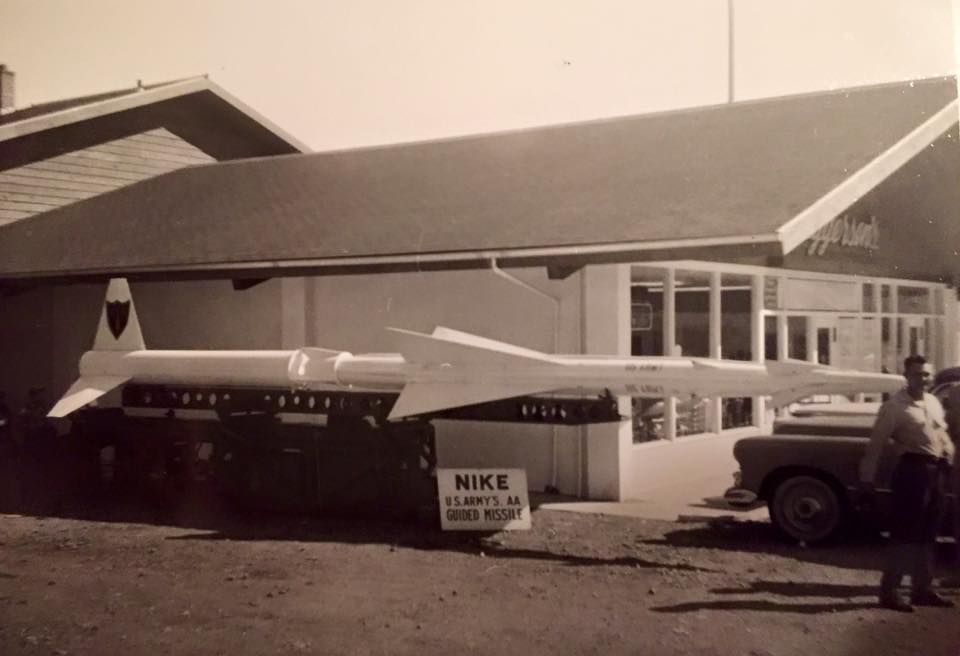
The Army displayed a Nike Ajax missile at what was then Greggersen’s store in Olalla. Local historian Gregg Olsen dates it to 1955. The store became Al’s Grocery in 1959. This would have been while the base was being built but before it opened in 1958.
The bases consisted of an integrated fire control area and a missile launch facility separated by between 1,000 yards and three miles. They had to be within line of sight so the radars could see the missiles as they launched.
Nike systems used three different radars
The fire control area contained integrated radar systems — one to detect incoming targets at long range, a second to track particular bombers after they’d been handed off, and a third to direct missiles to the planes. Computer systems plotted the intercept and triggered the warheads. The fire control property usually included the headquarters, barracks, mess, recreation hall and motor pool.
The Olalla Guest Lodge treatment center on LaLa Cove Lane bought the fire control center parcel in 1969 and continues to occupy five structures built by the Army in 1950. Six ranch-style duplexes, constructed in 1957 for Nike soldiers and later used for Navy housing, sit nearby. They are now private rentals.
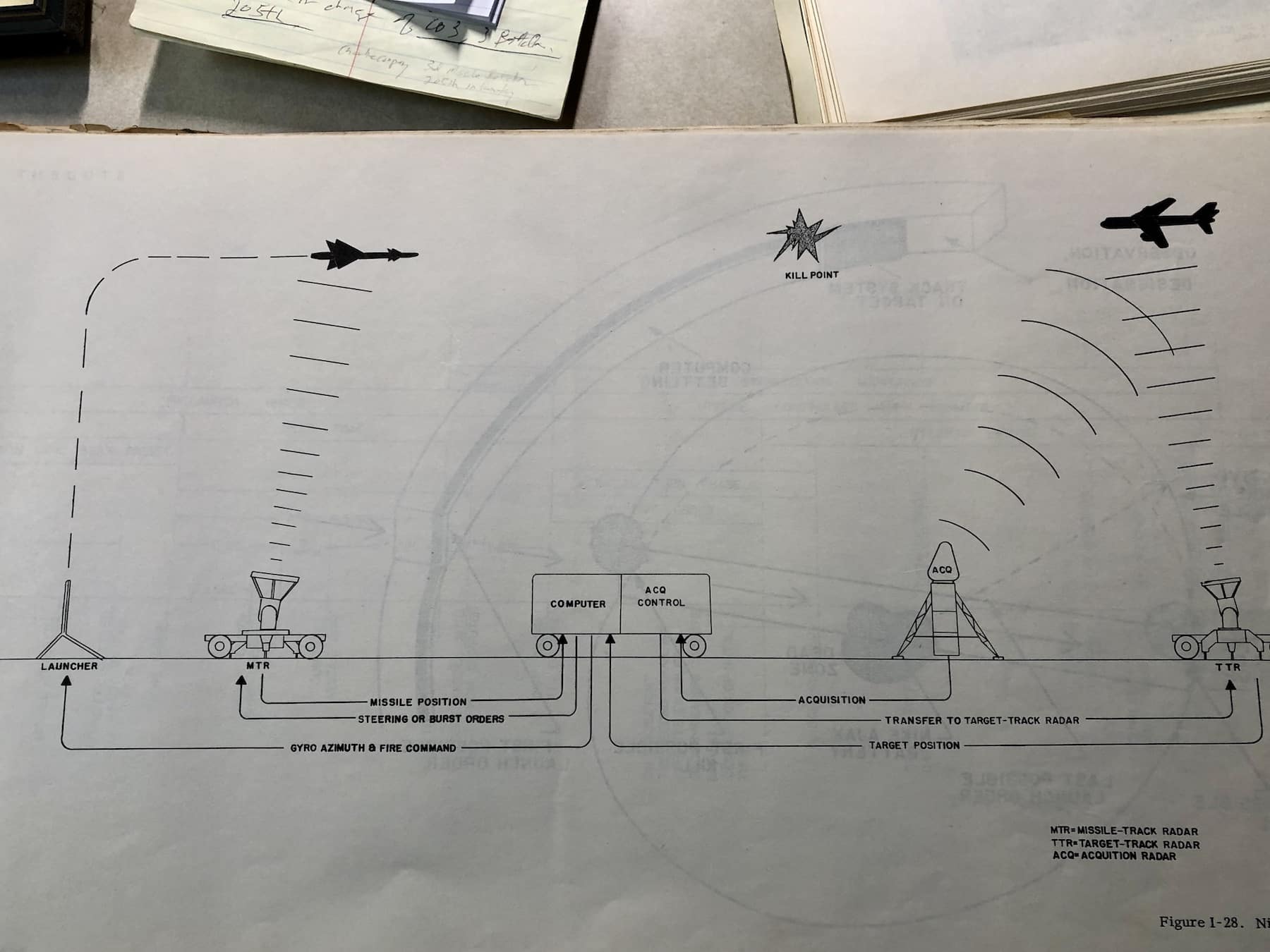
A page from a 1957 training manual shows the three different radars that were part of the Nike missile system.
The launch area held 12 missiles — eight in the service area and four in the underground ready area or on their launchers. When an alert was received, the missiles were raised to the surface one at a time on an elevator, then pushed along rails to the launchers. After electrical connections were made, the launchers raised the missile to about 85 degrees. If they were a straight-up 90 degrees, the booster might fall right back on top of them.
Olalla sites were on opposite sides of the lagoon
The Olalla launch site was off Nelson Road, across the lagoon from the control area. After the base closed, the government held on to the property for several years. Partiers and curiosity seekers would break in and explore the stripped site with its expansive concrete pad and openings into flooded underground rooms. A large concrete block building and Quonset hut, both built in 1950, remain.
Ajax missiles were 34 feet long (with booster), a foot across (4 feet with the fins) and weighed 2,455 pounds. They carried three conventional warheads weighing 12, 179, and 122 pounds mounted in the nose, center and aft sections.
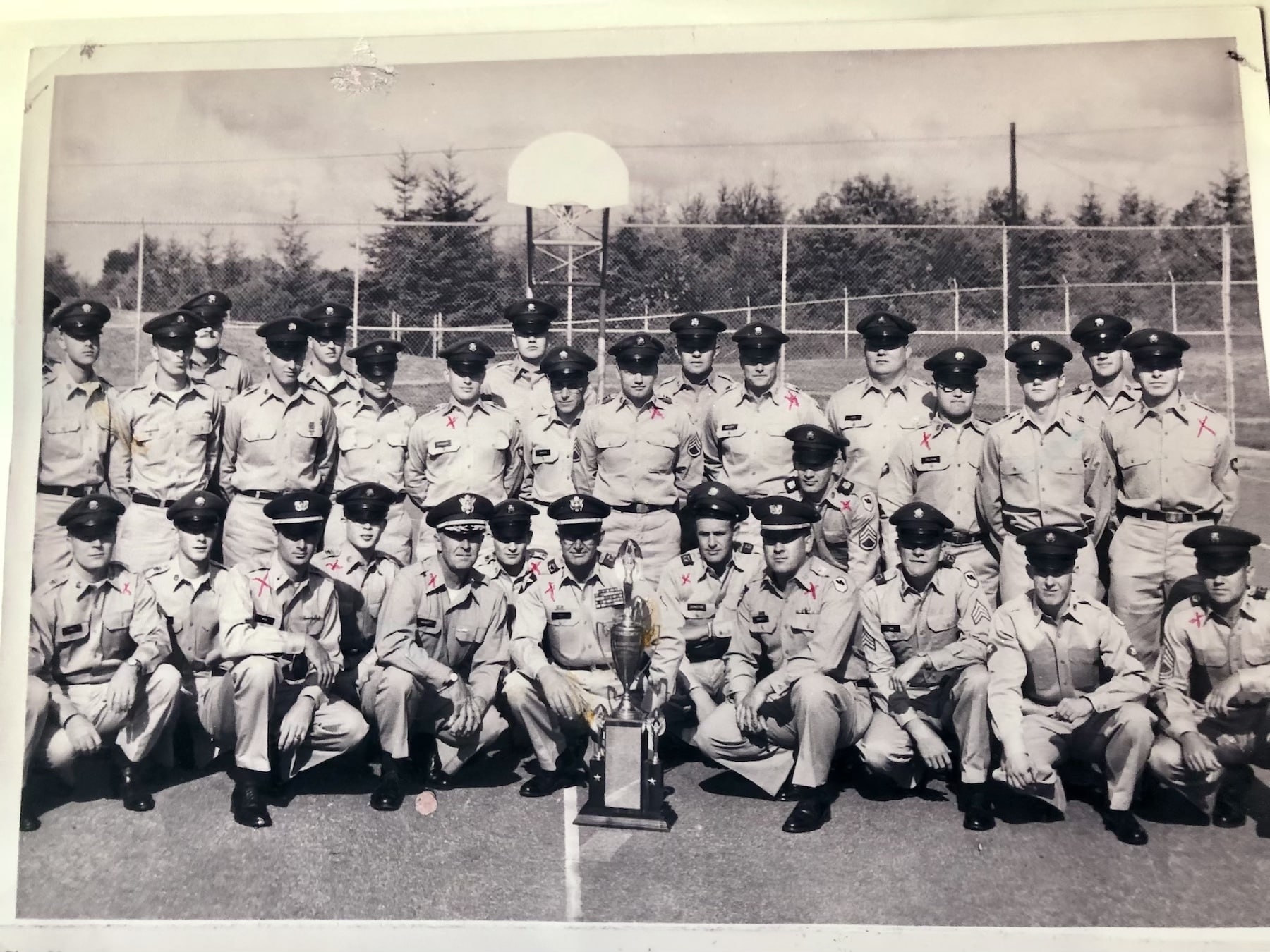
The Olalla Nike team poses with the Commander’s Trophy that it won during 1962 firing exercises in New Mexico. Maj. James W. Root is behind the trophy, Sgt. Carl Tinker second from left in the front row and Sgt. Vince Romo 11th from left in back row.
A first-stage, solid-propellant booster produced a 59,000-pound thrust for 2.5 seconds, then separated and fell away. A liquid-fueled sustainer motor powered the second stage for 70 seconds to a speed of Mach 2.3 (1,679 mph), a range of 25 to 30 miles, and a ceiling of 65,000 feet.
The Guardsmen weren’t weekend warriors. About 100 of them manned the site around the clock, on three shifts. Though there were barracks at the launch facility and housing at the control area, they were free to live off base.
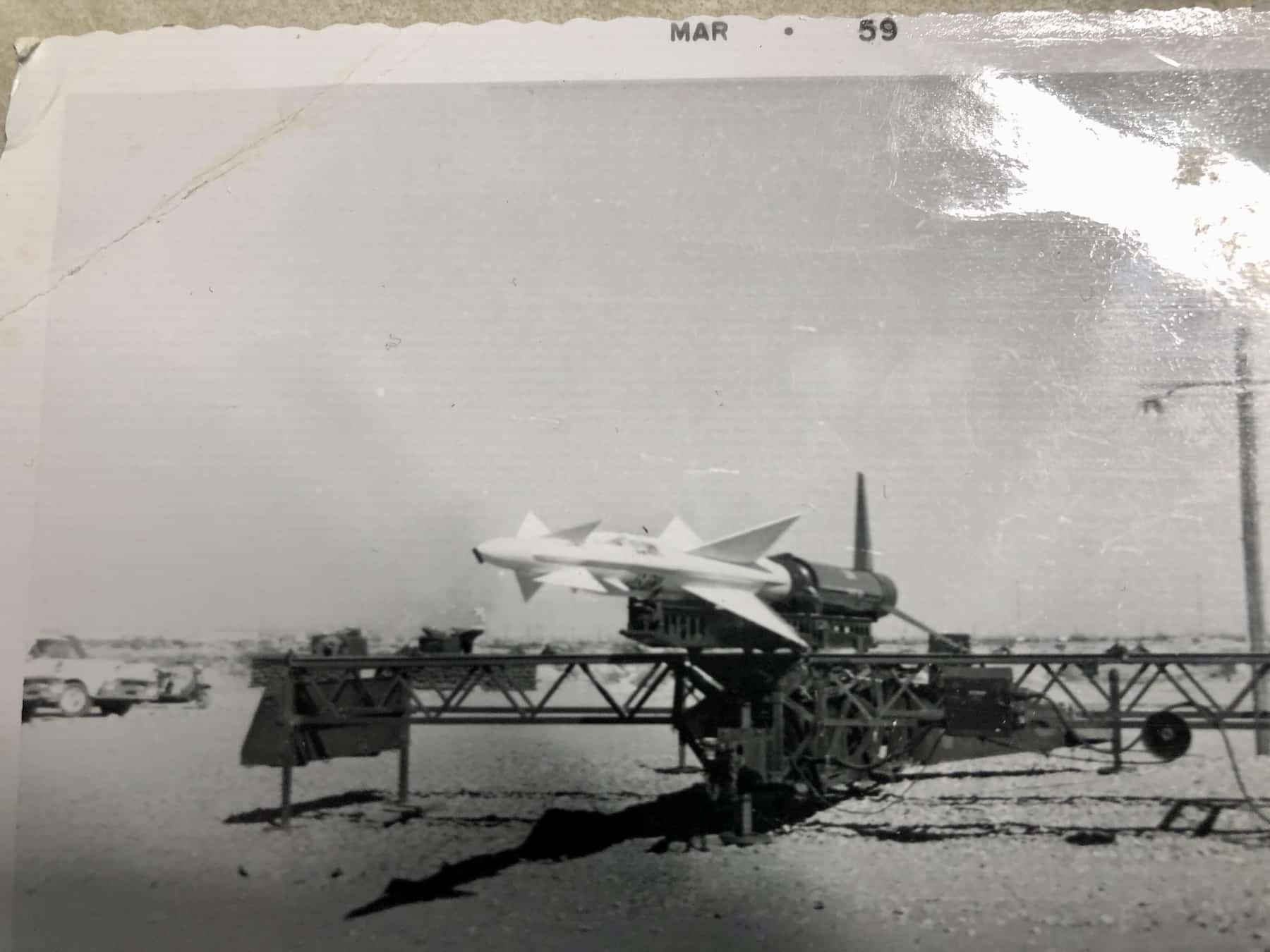
A snapshot of a Nike Ajax missile taken during firing exercises in 1959 at McGregor Missile Range in New Mexico.
Sgt. Tinker, who commuted from South Colby, spent the first year as a generator operator, utility repairman and missileman at the launch site. He later moved up to the control area and operated the target tracking radar from one of two trailers.
Romo, also a three-striper who lived in Port Orchard then, began in supply and shifted to missile assembly. Part of his duties included fueling the second stage with red fuming nitric acid and JP-4 jet fuel, which required donning a rubber suit.
Guardsmen participated in annual exercises in New Mexico
Soldiers only raised missiles on their launchers for training and drills, such as monthly operation readiness exercises in front of the brass. None was ever fired from a Nike base. Guardsmen trekked annually to McGregor Missile Range in New Mexico for firing exercises called Short Notice Annual Practice (SNAP). The Olalla contingent always fared well, including winning the Army Air Defense Command Commander’s Trophy in 1962.
“Our grade was 99.5, the highest in the nation,” said Romo, 88.
The awards were achieved under the command of the late Maj. James W. Root, who took over Battery C, 3rd Missile Battalion, 205th Artillery in 1961. The Root family lived in the base housing near the firing control area. Son Dan was only 4 and 5 years old and doesn’t recall much about the base itself, but can picture riding around with Tinker.
Guardsmen were like a big family
“They treated us like royalty,” Root said of him and older brother Jim. Dan, 66, lives in Olalla and is the retired former owner of Conan Fuel in Gig Harbor. Jim, 68, has a home in Selah. The Roots have kept in touch with several of the former Guardsmen through the decades, and it’s not just them. The whole Olalla team was tight.
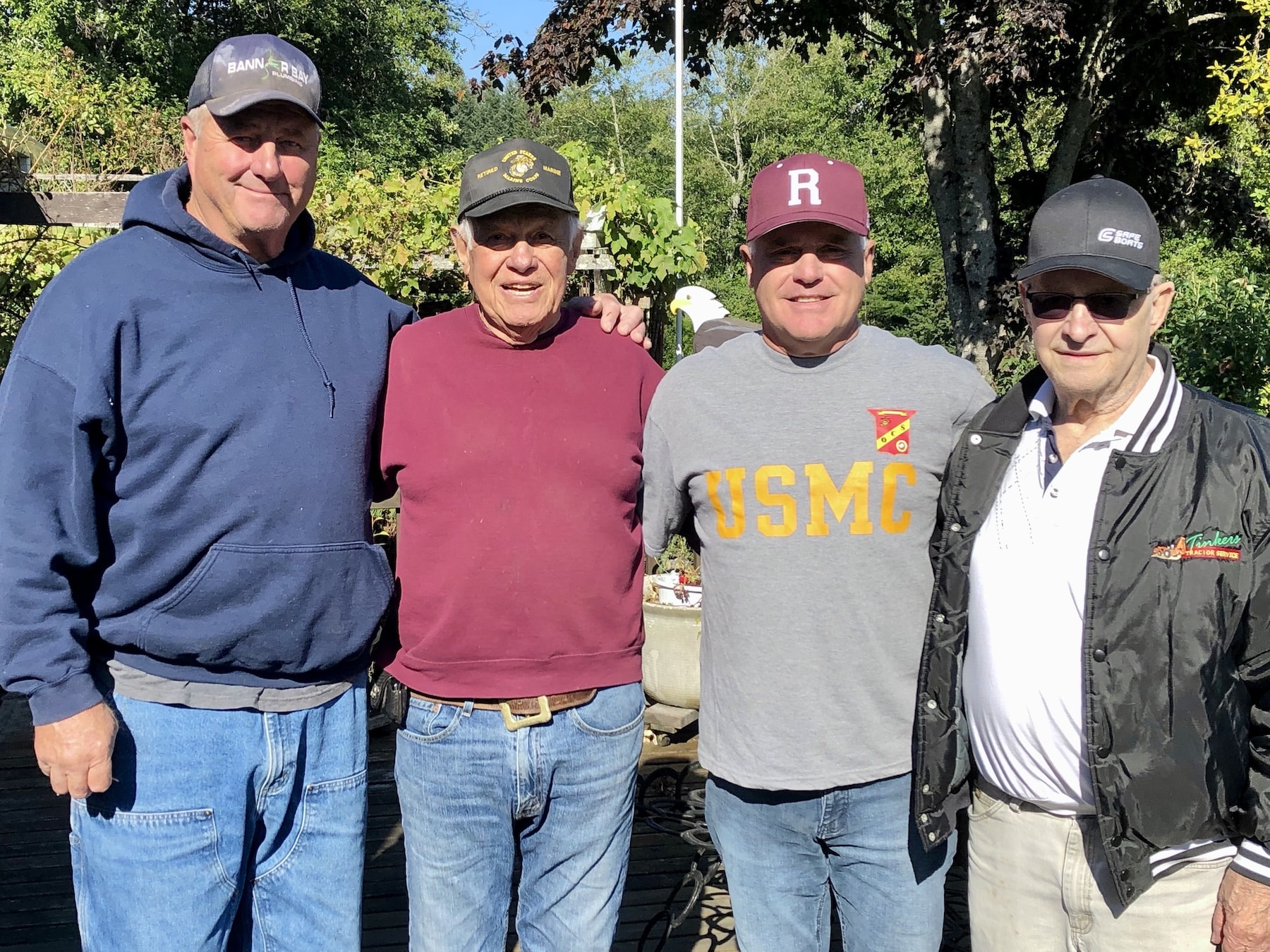
Dan Root, son of Olalla Nike commander James W. Root, Vince Romo, Romo’s son Randy and Carl Tinker during a reunion Wednesday at the elder Romo’s Olalla home.
“Everyone on base was just like brothers,” said Tinker, who now lives in Port Orchard.
“We were really close. We took care of each other,” Romo added.
The Cuban Missile Crisis created a nervous time at the base. Leaders of the United States and the Soviet Union engaged in a tense, 13-day political and military standoff in October 1962 over the installation of nuclear-armed Soviet missiles in Cuba, just 90 miles from U.S. shores. Olalla Guardsmen spent two weeks in the silos.
“Well, yeah, (it was scary), because we had our missiles ready to go,” Romo said.
Olalla missile site closed in 1963
During the early-to-mid-1960s, some Nike Ajax batteries were upgraded to the Hercules system. The new missiles had greater speed, range and accuracy, so about half as many batteries provided the same defensive capability. They carried 20-kiloton nuclear warheads (same as dropped on Nagasaki) that could also intercept ballistic missiles that were replacing bombers as the primary Soviet threat.
The military phased out eight Seattle-area Nike Ajax sites, including Olalla, from 1960 to 1963. Upgrades at Redmond, Vashon Island and Bainbridge Island allowed those bases to launch the Hercules missiles. They survived until 1974. Tinker and Romo transferred to Vashon and remained there until it closed.


